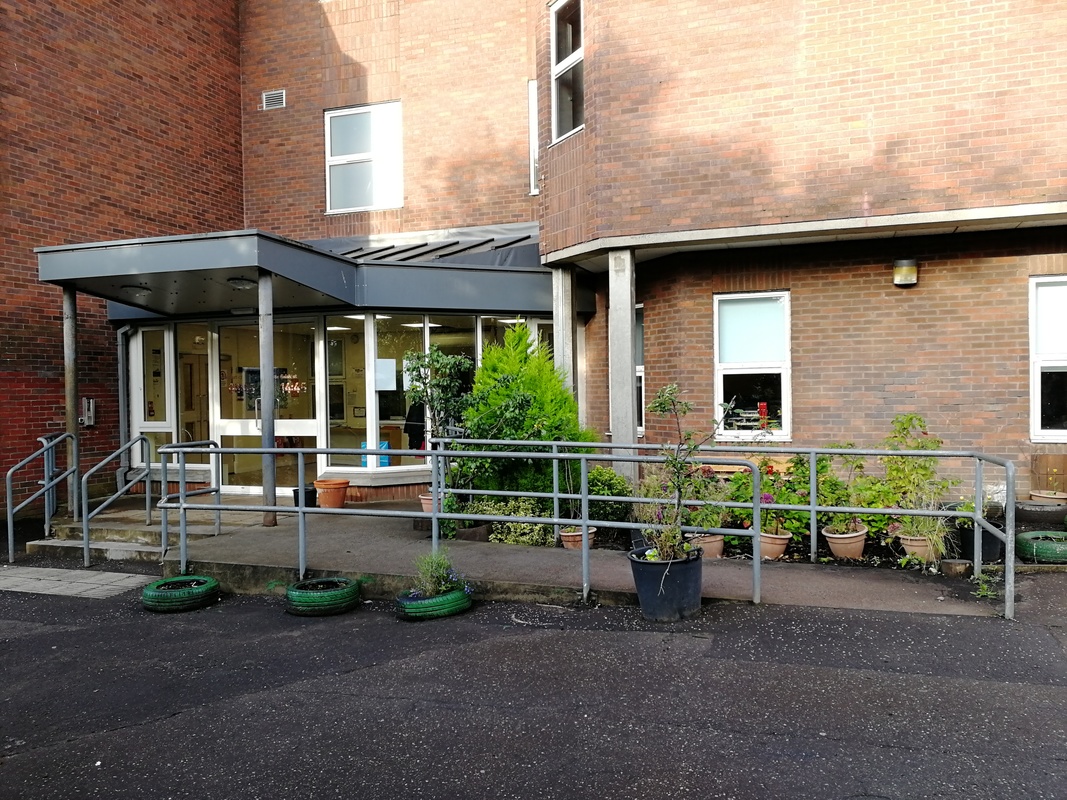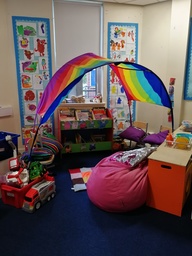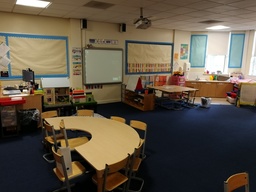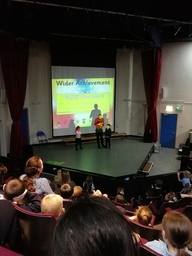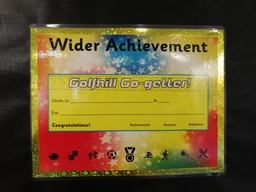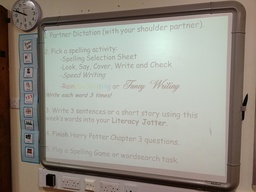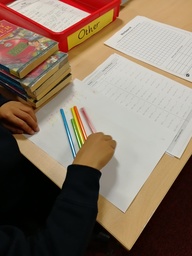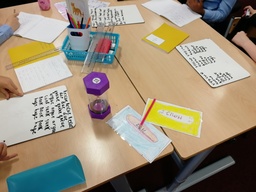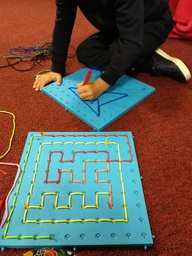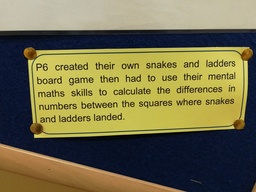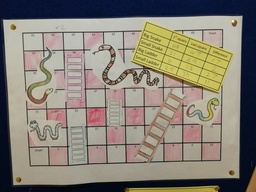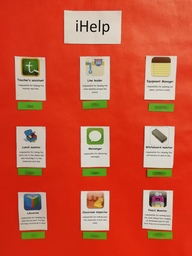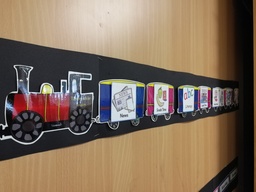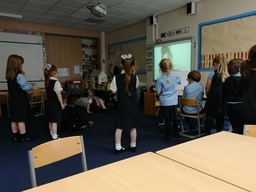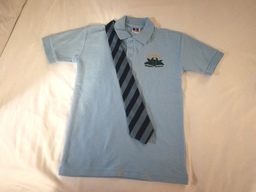Skotlanti / Scotland
Golfhill Primary School
Golfhill Primary Schoolissa opiskelee noin 190 oppilasta luokilla Primary 1 - Primary 7. Luokkia on yhteensä yhdeksän.
-----------------
Golfhill Primary School has about 190 pupils in classes Primary 1 to Primary 7. There are nine classes altogether.
-----------------
Golfhill Primary School has about 190 pupils in classes Primary 1 to Primary 7. There are nine classes altogether.
0 kommenttia
First Day of School
Meidät otettiin aamulla vastaan erittäin lämpimästi. Rehtori kertoi koulun toiminnasta, esitteli koulun tilat ja ohjasi meidät luokkiin seuraamaan opetusta. Kuljimme kukin yhden luokan mukana seuraten oppilaiden ja opettajien työskentelyä koulupäivän ajan. Pääsimme myös nauttimaan koululounaasta, johon tänään kuului pitsapala, pastaa, jogurtti, hedelmäpala ja juoma.
Ensimmäisen päivän perusteella suurimmat erot suomalaiseen kouluun ovat koulupäivän rakenteessa sekä henkilökunnan työtehtävissä koulupäivän aikana. Koulu alkaa kaikilla ikäluokilla klo 8.45 ja päättyy klo 14.45. Päivän aikana on aamupäivällä lyhyt 15 minuutin mittainen tauko sekä puolen päivän tienoilla 45 minuutin ruokatauko, jonka opettajat viettävät erillään oppilaistaan. Ruokasalissa on erilliset valvojat ja lasten ulkoilun aikana vastuu oppilaiden vahtimisesta on ohjaajilla (support for learning workers).
Kuvat Primary 1 luokasta, jossa opiskelee noin 4-5-vuotiaita lapsia.
----------------
We were welcomed very warmly in the morning. The headmaster Mr Morrow told us about the school and how the school runs. He gave us a tour around the school and guided us to our first classes to start our experience. We all joined a class each for the day, following their average school day. During the day we also got to enjoy school lunch which today consisted of a slice of pizza, pasta, yoghurt, fruit and water.
Based on our first day the biggest differences in the Scottish school system compared to the Finnish school system are in the structure of the school day and in the tasks of staff during the school day. In Golfhill Primary School, school starts at 8.45 every morning and ends at 14.45 every afternoon for all pupils. During the day, there is one short (15 minutes) break and a 45 minute long lunch break aroun noon. Teachers spent the lunch break separate from their pupils, whereas in Finland all teachers eat with their pupils (or atleast supervice them during lunch). Here, there are separate supervisors in the lunch area. The responsibility of outdoor supervision is mainly on the support for laersing workers (whereas in Finland, only teachers can be responsible for outdoor supervision).
The following pictures are from Primary 1, where there are pupils aged 4-5 years.
Ensimmäisen päivän perusteella suurimmat erot suomalaiseen kouluun ovat koulupäivän rakenteessa sekä henkilökunnan työtehtävissä koulupäivän aikana. Koulu alkaa kaikilla ikäluokilla klo 8.45 ja päättyy klo 14.45. Päivän aikana on aamupäivällä lyhyt 15 minuutin mittainen tauko sekä puolen päivän tienoilla 45 minuutin ruokatauko, jonka opettajat viettävät erillään oppilaistaan. Ruokasalissa on erilliset valvojat ja lasten ulkoilun aikana vastuu oppilaiden vahtimisesta on ohjaajilla (support for learning workers).
Kuvat Primary 1 luokasta, jossa opiskelee noin 4-5-vuotiaita lapsia.
----------------
We were welcomed very warmly in the morning. The headmaster Mr Morrow told us about the school and how the school runs. He gave us a tour around the school and guided us to our first classes to start our experience. We all joined a class each for the day, following their average school day. During the day we also got to enjoy school lunch which today consisted of a slice of pizza, pasta, yoghurt, fruit and water.
Based on our first day the biggest differences in the Scottish school system compared to the Finnish school system are in the structure of the school day and in the tasks of staff during the school day. In Golfhill Primary School, school starts at 8.45 every morning and ends at 14.45 every afternoon for all pupils. During the day, there is one short (15 minutes) break and a 45 minute long lunch break aroun noon. Teachers spent the lunch break separate from their pupils, whereas in Finland all teachers eat with their pupils (or atleast supervice them during lunch). Here, there are separate supervisors in the lunch area. The responsibility of outdoor supervision is mainly on the support for laersing workers (whereas in Finland, only teachers can be responsible for outdoor supervision).
The following pictures are from Primary 1, where there are pupils aged 4-5 years.
Day two - Assembly
Koulun rehtori pitää joka viikko koko koulun oppilaille Assemblyn. Tuona aikana opettajille on aikaa suunnitella omaa opetustaan. Assemblyssä on aina jokin yhteinen käsittelyssä oleva aihe. Tänään aiheena oli World Tourism Day ja turismin vaikutukset omalle asuinalueelle. Rehtori kertoi matkustamisesta ja esitteli valokuvia ympäri maailmaa, sekä kertoi lapsille miksi turismi on hyvä asia ja miten laajoja positiivisia vaikutuksia turismilla on. Assemblyn aikana rehtori laulatti oppilaita ja oli innokkaasti myös itse mukana.
Assemblyssä rehtori jakaa myös jokaiselle luokka-asteelle "viikkopalkinnot", jonka luokka voi voittaa noudattamalla koulun arvoja. Opettajat voivat antaa oppilaalle kultaisen lipun (Golden Ticket) kun huomaavat ystävällistä, reilua tai toisia arvostavaa käytöstä. Lippuja kerätään viikko ja ennen jokaista assemblya ne lasketaan yhteen. Eniten lippuja kerännyt luokka voittaa ylimääräistä vapaa-aikaa poissa koulutehtävien parista. Koulussa on muutenkin hyvin luonnollisesti esillä monenlainen palkitseminen ja positiivinen kannustaminen.
Myös koulun ulkopuolella tapahtuvista onnistumisista ja saavutuksia palkitaan Golfhill-Go-Getter palkinnolla. Tämän avulla tuodaan esille positiivisesti se, että onnistumisia on myös muissa kuin kouluaineissa ja jokainen pääsee loistamaan omalla tavallaan.
-----------------
The headmaster holds an assembly every week to all the pupils in the school. During that time (about an hour) teachers have time to plan and prepare for their teaching. Assembly presents one topic every weeks. Today Mr Morrow talked about World Tourism Day and the effects of tourism to the area where foreigners spend time in. He talked about languages and travelling and showed some wonderful pictures around the world. He explained why tourism is a good thing and how vast all the positive sides in tourism are. During assembly the headmaster also lead the pupils to sing a song and sang along with them.
At the assembly the headmaster gives each age group their “weekly awards”. A class can get awarded by following the schools values. A pupil can get a golden ticket any time during the week for being friendly, fair and respectful towards others. These tickets are then put into a jar in the classroom and once a week added together. The class that gets the most tickets, wins the award (extra freetime etc). All sort of positive feedback, rewarding good behavior and supporting desirable behavior are a very natural part of the school life here.
Also being successful or achieving something outside of school (level up on swimming etc) is noticed and awarded a “Golfhill-Go-Getter” during assembly. This is a nice positive way of letting pupils share their achievements and allowing everyone to shine in what they can do best.
Assemblyssä rehtori jakaa myös jokaiselle luokka-asteelle "viikkopalkinnot", jonka luokka voi voittaa noudattamalla koulun arvoja. Opettajat voivat antaa oppilaalle kultaisen lipun (Golden Ticket) kun huomaavat ystävällistä, reilua tai toisia arvostavaa käytöstä. Lippuja kerätään viikko ja ennen jokaista assemblya ne lasketaan yhteen. Eniten lippuja kerännyt luokka voittaa ylimääräistä vapaa-aikaa poissa koulutehtävien parista. Koulussa on muutenkin hyvin luonnollisesti esillä monenlainen palkitseminen ja positiivinen kannustaminen.
Myös koulun ulkopuolella tapahtuvista onnistumisista ja saavutuksia palkitaan Golfhill-Go-Getter palkinnolla. Tämän avulla tuodaan esille positiivisesti se, että onnistumisia on myös muissa kuin kouluaineissa ja jokainen pääsee loistamaan omalla tavallaan.
-----------------
The headmaster holds an assembly every week to all the pupils in the school. During that time (about an hour) teachers have time to plan and prepare for their teaching. Assembly presents one topic every weeks. Today Mr Morrow talked about World Tourism Day and the effects of tourism to the area where foreigners spend time in. He talked about languages and travelling and showed some wonderful pictures around the world. He explained why tourism is a good thing and how vast all the positive sides in tourism are. During assembly the headmaster also lead the pupils to sing a song and sang along with them.
At the assembly the headmaster gives each age group their “weekly awards”. A class can get awarded by following the schools values. A pupil can get a golden ticket any time during the week for being friendly, fair and respectful towards others. These tickets are then put into a jar in the classroom and once a week added together. The class that gets the most tickets, wins the award (extra freetime etc). All sort of positive feedback, rewarding good behavior and supporting desirable behavior are a very natural part of the school life here.
Also being successful or achieving something outside of school (level up on swimming etc) is noticed and awarded a “Golfhill-Go-Getter” during assembly. This is a nice positive way of letting pupils share their achievements and allowing everyone to shine in what they can do best.
Day three - Opiskelu on hyvin toiminnallista /Studying is very functional
Koulussa käytetään oppikirjoja hyvin vähän. Toiminnallista materiaalia sen sijaan on todella paljon käytössä. Oppilaat tekevät paljon toiminnallisia tehtäviä sekä välihommina, että opiskellessaan uutta asiaa. Esimerkiksi kirjoittamisen ja matematiikan harjoituksia tehdään usein valkotauluille, jotka jokaisella oppilaalla on käytettävissään.
Pääsääntöisesti töitä tehdään pienissä ryhmissä, yhdessä luokkatoverin kanssa. Monet tehtävistä on oppimispelejä, joissa tarvitaan vähintään kaksi osanottajaa.
------------
The school uses schoolbooks fairly little. Instead, there´s a lot of functional/active material in use. Pupils work on functional tasks and games in between school task and also when studying new things. For example tasks on writing or math can be done on a small whiteboard that all pupils have in their use. Handouts are also in use.
Mainly pupils work in small groups, together with a classmate. A lot of the tasks on hand are learning games, where a partner is needed.
Pääsääntöisesti töitä tehdään pienissä ryhmissä, yhdessä luokkatoverin kanssa. Monet tehtävistä on oppimispelejä, joissa tarvitaan vähintään kaksi osanottajaa.
------------
The school uses schoolbooks fairly little. Instead, there´s a lot of functional/active material in use. Pupils work on functional tasks and games in between school task and also when studying new things. For example tasks on writing or math can be done on a small whiteboard that all pupils have in their use. Handouts are also in use.
Mainly pupils work in small groups, together with a classmate. A lot of the tasks on hand are learning games, where a partner is needed.
Day Four - Oppilaiden osallistaminen / Pupil Committees
Koulussa on monia erilaisia toimikuntia, joissa oppilaat ovat osallisina. Jokainen oppilas saa tehdä hakemuksen siihen toimikuntaan, mikä häntä kiinnostaa. Koulussa toimii muun muassa seuraavalla tavalla nimettyjä ryhmiä oppilaille Pupil Council, Eco Commetee, Charity Group, Junior Road Safety Officers, Activity Activator ja Buddies.
Myös luokissa oppilailla on erilaisia vastuutehtäviä, jopa enemmän kuin Suomessa. Oppilaiden vastuualueita ovat muun muassa joka aamuisen paikallaolijarekisterin toimittaminen kansliaan, vihkojen ym. jakaminen, taulun pyyhkiminen, lunch box- korin toimittaminen ruokasaliin, laitevastuu, kirjavastuu (esim. järjestää luokan kirjaston kirjat sovitusti), line leader (vastaa siitä että jono kulkee reippaasti kulkemalla itse jonon edessä, jonotusta on koulupäivän aikana paljon).
-----------------
There are many different committees in the school that pupils can take part in. Every pupil can apply to any of the committees, according to their own interest. There are for example the following committees for the pupils to take part in: Pupil Council, Eco Committee, Charity Group, Junior Road Safety Officers, Activity Activator and Buddies.
Pupils also have different kinds of responsibilities in the classroom, even more so than in Finland. Depending on the pupils age, they can be responsible for taking the student register to the office, assisting the teacher (handing out notebooks etc.), cleaning the whiteboard, delivering lunch boxes to the lunch area, taking care of digital devices, organizing class library books or acting as a line leader.
Myös luokissa oppilailla on erilaisia vastuutehtäviä, jopa enemmän kuin Suomessa. Oppilaiden vastuualueita ovat muun muassa joka aamuisen paikallaolijarekisterin toimittaminen kansliaan, vihkojen ym. jakaminen, taulun pyyhkiminen, lunch box- korin toimittaminen ruokasaliin, laitevastuu, kirjavastuu (esim. järjestää luokan kirjaston kirjat sovitusti), line leader (vastaa siitä että jono kulkee reippaasti kulkemalla itse jonon edessä, jonotusta on koulupäivän aikana paljon).
-----------------
There are many different committees in the school that pupils can take part in. Every pupil can apply to any of the committees, according to their own interest. There are for example the following committees for the pupils to take part in: Pupil Council, Eco Committee, Charity Group, Junior Road Safety Officers, Activity Activator and Buddies.
Pupils also have different kinds of responsibilities in the classroom, even more so than in Finland. Depending on the pupils age, they can be responsible for taking the student register to the office, assisting the teacher (handing out notebooks etc.), cleaning the whiteboard, delivering lunch boxes to the lunch area, taking care of digital devices, organizing class library books or acting as a line leader.
Koulujärjestelmien suurimpia eroja / The Biggest Differences Between Our School Systems
Suurimpia eroja Skotlannin ja Suomen koulujärjestelmien välillä on viikon tutustumisen perusteella ainakin koulupäivän rakenne ja oppilaiden pukukoodi. Skotlannissa kaikki oppilaat alkaen neljävuotiaista ovat koulussa joka arkipäivä klo 8.45-14.45 (tai joissain kouluissa 9-15). Päivän aikana ei ole pienimmilläkään oppilailla mahdollisuutta lepohetkeen, vaan päivä on täyttä toimintaa aamusta iltapäivään.
Golfhill Primary Schoolin koulupukuun kuuluu vaaleansininen kauluspaita tai t-paita, navy-sininen hame tai housut, mustat kengät ja kravatti. Koululla on myynnissä koulun logolla varustettuja paitoja (myös tummansinisiä gollegepaitoja ja neuletakkeja) ja kravatteja. Koulu on kuitenkin alueella, jolla asuu paljon eri tuloluokkien perheitä, joten on tehty päätös, että koulun omia vaatteita ei ole pakko käyttää vaan samantapaiset vaatteen käyvät virallisen koulupuvun tilalla.
Opettajien päivät rakentuvat hyvin samantapaisesti kuin Suomessa, oppitunnit ja oppilaiden koulupäivä on tiivistä luokkatyöskentelyä ja suunnittelu ja valmistelutyö tehdään koulupäivän jälkeen. Viikottainen assembly tuo kuitenkin kerran viikossa tunnin verran suunnitteluaikaa keskelle työpäivää.
-----------------
Based on a week of observation, the biggest differences between the Scottish and the Finnish school systems are in the structure of the school day and in the dress code on pupils. In Scotland all children from the age of four are in school every day between 8.45 and 14.45 (or in some school between 9 and 15). During the day even the youngest pupils have no naptime. Schooldays are very active all the way from the morning to the afternoon.
The Golfhill Primary Schools school uniform consist of a sky blue shirt, navy skirt or trousers and a tie. School ties and shirts can be purchased at the school. However, the school has made a decision not to make the schools own clothes obligatory and pupils are also allowed to wear similar clothes to school. In addition there is a “coat rack” in the schools hallway, where families can bring or take school clothes free of charge.
The teachers work days are constructed quite similarly to ours in Finland. Time with the pupils and lessons are very intense and full of action and all of the planning and preparation is done after pupils go home. However, the weekly assembly brings a bit of extra time for planning in the middle of the day.
Golfhill Primary Schoolin koulupukuun kuuluu vaaleansininen kauluspaita tai t-paita, navy-sininen hame tai housut, mustat kengät ja kravatti. Koululla on myynnissä koulun logolla varustettuja paitoja (myös tummansinisiä gollegepaitoja ja neuletakkeja) ja kravatteja. Koulu on kuitenkin alueella, jolla asuu paljon eri tuloluokkien perheitä, joten on tehty päätös, että koulun omia vaatteita ei ole pakko käyttää vaan samantapaiset vaatteen käyvät virallisen koulupuvun tilalla.
Opettajien päivät rakentuvat hyvin samantapaisesti kuin Suomessa, oppitunnit ja oppilaiden koulupäivä on tiivistä luokkatyöskentelyä ja suunnittelu ja valmistelutyö tehdään koulupäivän jälkeen. Viikottainen assembly tuo kuitenkin kerran viikossa tunnin verran suunnitteluaikaa keskelle työpäivää.
-----------------
Based on a week of observation, the biggest differences between the Scottish and the Finnish school systems are in the structure of the school day and in the dress code on pupils. In Scotland all children from the age of four are in school every day between 8.45 and 14.45 (or in some school between 9 and 15). During the day even the youngest pupils have no naptime. Schooldays are very active all the way from the morning to the afternoon.
The Golfhill Primary Schools school uniform consist of a sky blue shirt, navy skirt or trousers and a tie. School ties and shirts can be purchased at the school. However, the school has made a decision not to make the schools own clothes obligatory and pupils are also allowed to wear similar clothes to school. In addition there is a “coat rack” in the schools hallway, where families can bring or take school clothes free of charge.
The teachers work days are constructed quite similarly to ours in Finland. Time with the pupils and lessons are very intense and full of action and all of the planning and preparation is done after pupils go home. However, the weekly assembly brings a bit of extra time for planning in the middle of the day.
